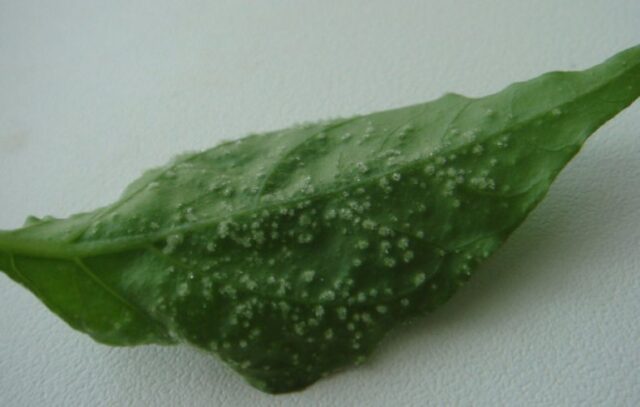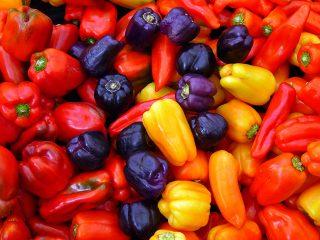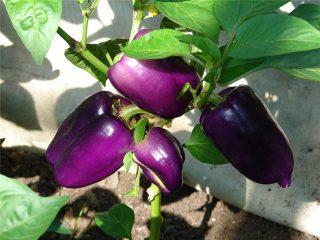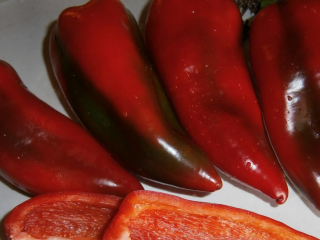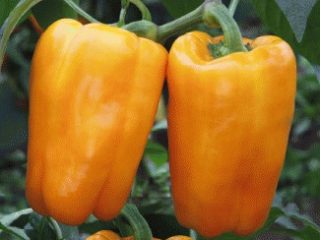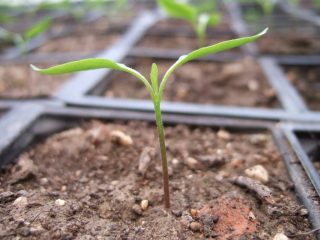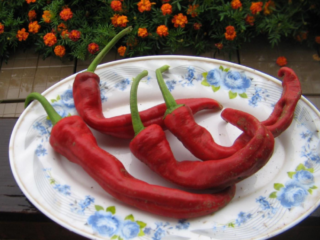Content
Pepper leaf oedema is associated with overwatering as well as lack of sunlight. Water exchange in plant tissues is disrupted, as a result of which numerous small tubercles form on the underside of the leaf blades. They are quite dense to the touch, the surface is rough. Although oedema is not very dangerous or contagious, its development can lead to rotting of the roots. Occasionally, pathology causes the death of the entire bush.
Description and photo of oedema on pepper leaves
Oedema (often called edema or simply dropsy) is swelling (this is how this word is translated from Latin) of pepper leaves. This is a metabolic disorder that has nothing to do with infectious causes. Those. the disease is not fungal, bacterial or viral, so it is impossible to infect neighboring plants with it.
You can diagnose oedema on the leaves of pepper seedlings or adult bushes by the following signs:
- Small and numerous swollen formations on the underside (especially closer to the petiole).
- If you run along the underside of the leaf, you will feel a bumpy surface.
- Over time, similar growths may appear on the petioles.
- In advanced stages, the stem begins to curl.
At the same time, the peppers look quite normal in appearance - the leaves are green and do not lose their elasticity. Although pepper leaf oedema is not too dangerous, it will only get worse if left untreated. This can lead to the death of the plant.
What can be confused with
Leaf oedema of indoor or outdoor peppers can be confused with white mold.

A fungal disease, in which the surface is covered with small, numerous pimples, occurs at high humidity
Mold is white in color, but in the case of oedema, this sign is not observed.
Pathology can also be confused with signs of common pests:
- aphid;
- scale insects;
- spider mites.
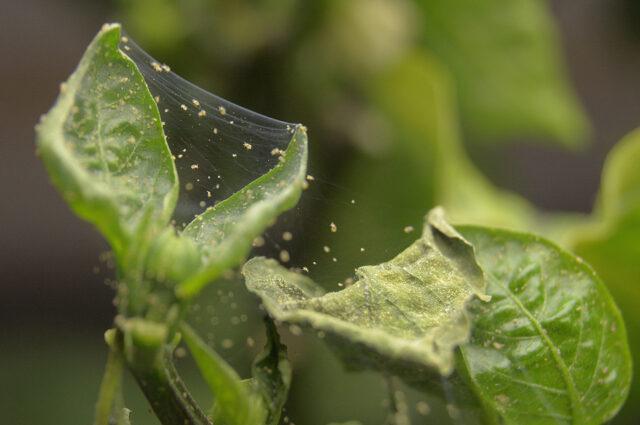
If mites appear on the bushes, the surface of the leaves becomes covered with a thin cobweb
When parasitized by aphids and scale insects, a sticky coating may appear. But there will be no dense tubercles - this is a distinctive feature by which it is easy to identify oedema.
Reasons for appearance
Pepper dropsy has nothing to do with diseases or pests. Violation of the rules of care leads to its appearance:
- Regular overwatering.
- Lack of sunlight.
- Too dense plantings, crowding.
- Lack of ventilation, high air humidity.
- Temperature fluctuations.
Thus, the main cause of oedema of pepper leaves is excess moisture. If a lot of water enters the tissue, normally its excess is removed through stomata - special pores on the surface of the leaf. But when there is too much liquid, the holes become clogged, and the excess is concentrated in the tissues of the underside of the leaf. Therefore, they become covered with small tubercles, which indicates the development of dropsy.
Experienced gardeners note that leaf oedema most often develops when peppers are grown in a greenhouse, as well as indoors (at the seedling stage). Air circulation in a closed room is difficult. If watering is excessive, this will most likely cause swelling. Another unfavorable factor is constant temperature fluctuations, which complicate metabolism in plant tissues.
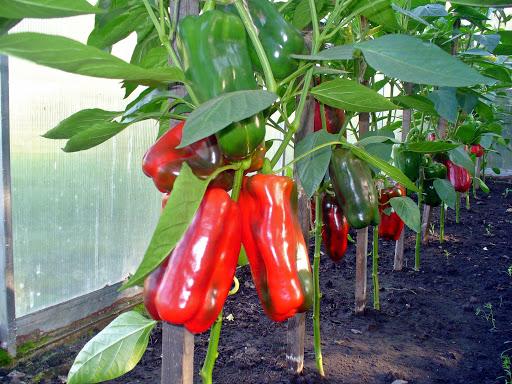
Greenhouse-grown peppers are most at risk from the disease.
Danger of oedema
Oedema is not an infectious pathology, so it does not pose any particular danger. Even if several plants are affected, the rest of the plantings will definitely not become infected. As a rule, it is enough to simply stop watering and allow the soil to dry out, after which you can give water as normal.
On the other hand, if you do nothing, the dropsy will definitely not go away. Moreover, excess moisture combined with a lack of light will lead to adverse consequences:
- leaves curl and lose their shape;
- fall off over time;
- the roots rot and die.
Treatment methods for oedema on pepper
You can treat oedema of pepper seedlings in a fairly simple way - completely stop watering, spraying with water and slightly dry the soil. If the tubercles appear at the stage of growing seedlings, it is enough to place the container on the heating radiator, having previously placed a piece of foam plastic 7-10 cm thick.
If dropsy of pepper leaves appears when growing in open ground, you just need to stop giving water and wait until the surface layer of the soil becomes almost completely dry.There is no need to let the earth crack from drying out.
When growing in a greenhouse, watering is also completely stopped. But at the same time, it is necessary to regularly ventilate the room, leaving the door and windows open all day. If the night is warm, you don't have to close it 24 hours a day.
In rare cases, when the seedlings are literally flooded with water, for example, watering was done, after which heavy rain immediately fell, the plants will need to be replanted, otherwise they risk dying. Then prepare a dry bed and transfer all the peppers there. Moreover, it is better to choose a place in a greenhouse to avoid heavy rains (especially if they are expected according to the forecast). You can plant it in the same area, after first pouring dry soil on it with a small amount of clean sand.
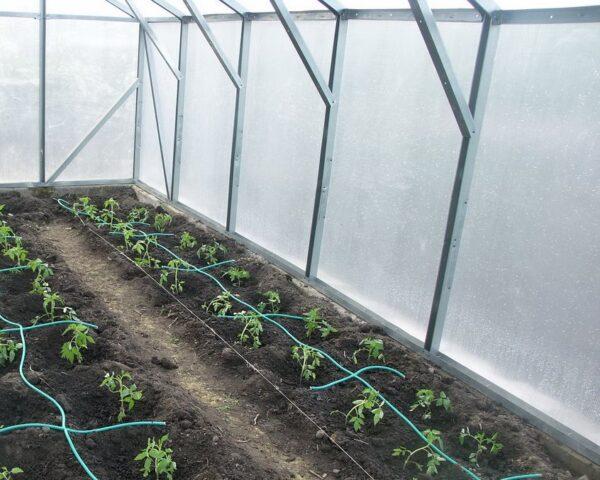
The main measure of treatment and prevention is compliance with watering norms.
Preventive measures
Oedema on peppers is a rather dangerous disease, and correcting the situation is sometimes not so easy. But it is quite possible to prevent the development of pathology. To do this, it is necessary to take several preventive measures. Among the main methods recommended by experienced gardeners are the following:
- Oedema on the leaves of peppers is primarily caused by excess watering, so it is important to ensure that the soil remains moderately dry. The surface layer should have time to dry - to make sure of this, just apply your palm.
- Pathology also develops against the background of a lack of sunlight. It is a mistake to think that if you illuminate seedlings with diodes or phytolamps, this is quite enough. In fact, lighting is organized only in the morning and evening, and during the day the canopies should be exposed to the sun's rays.
- Some varieties of bell peppers are more prone to various diseases, including oedema. Therefore, it is better to choose genetically resistant varieties, for example, Orange Miracle, Cockatoo F1, Agapovsky, Big Papa, Hercules, Pharaoh F1 and many others.
- Pepper plantings should not be too dense. Low-growing varieties are planted at intervals of at least 40 cm (row spacing is 50-60 cm). If the variety is tall, at least 50 cm should be left between seedlings, and 70 cm between rows. These rules should not be violated, even if the area is small.
Conclusion
Pepper leaf oedema most often develops when grown in greenhouse conditions. The main prevention is compliance with watering rates and regular ventilation. If you follow the rules of care, the gardener will probably not encounter such a phenomenon.
